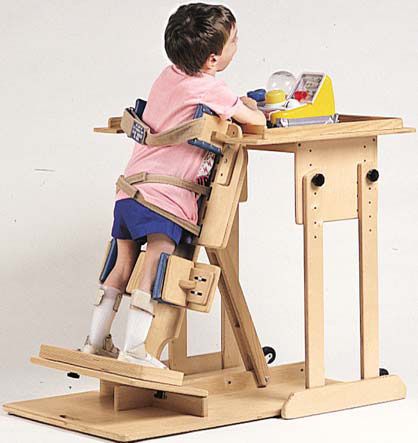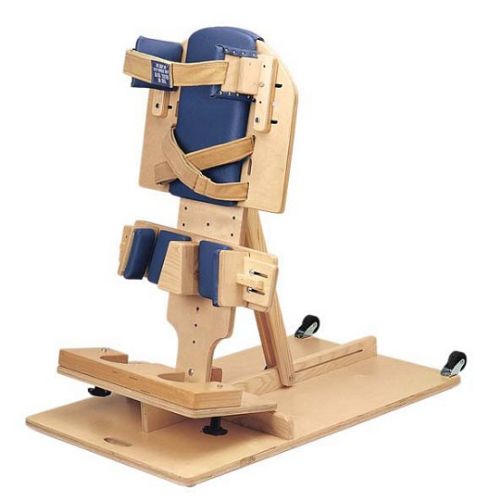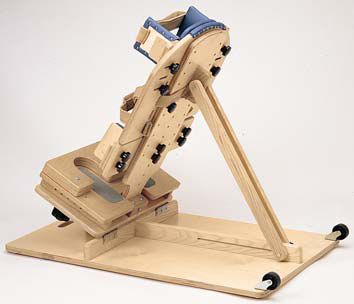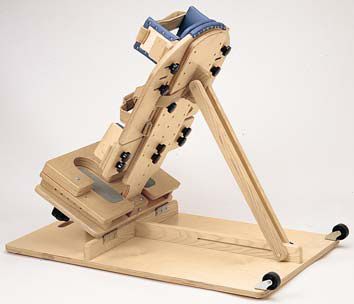Standing is important for developmentally disabled children's rehabilitation. Standing provides an alternative for positioning and pressure relief for those who use wheelchairs.
The Benefits of Standing:
- Improved bowel and bladder function.
- Enhanced respiratory function.
- Increased endurance.
- Reduction of pressure ulcers.
- Prevention of lower extremity contractures.
- Lower extremity weight bearing improves and maintains bone density.
- Improvement of circulation.
- Strengthening of the cardiovascular system.
- Facilitates development of appropriate alignment of the spine, hips, knees, and ankles.
- Improves social interaction and self-esteem.
There are several types of standers that are generally used. Supine Standers are considered an introduction to weight bearing and are used by patients who are lacking head control. They provide support on the posterior surface of the user and incremental weight bearing as tolerated. Prone Standers are used when a patient has better head control, for strengthening extensors and as a functional position for play and upper extremity use. Vertical Standers are static and support the patient in an erect position. They are the best for maintaining bone density, assisting with bladder and bowel function and in introducing full weight bearing.
The TherAdapt Prone Stander, designed by Cheryl Colangelo, MS, OTR, provides the developing child with appropriate support and weight bearing through the lower extremities. The Prone Stander is available in an Early Intervention, Primary, and Intermediate size.
We recommend that the Prone Stander be used by individuals who require anterior support, display emerging head and trunk control, or are beginning to right themselves from a prone position. (Note: The alignment of the weight bearing joints is essential for successful positioning in the Prone Stander.) The unique design of the knee and trunk components permits the user to be at eye level with his peers. This is beneficial for social and academic interaction. It promotes a sense of postural security as well.
NOTE: Some assembly may be required.
| Size |
Product Code |
Chest Height |
Trunk Width |
Overall Dimensions |
User Weight Limit |
Product Weight |
| Early Intervention |
THA-PS-100 |
20in - 28in |
6½in - 9½in |
18in W x 28in L |
75 lbs. |
31 lbs. |
| Primary |
THA-PS-200 |
27in - 34in |
8in - 12in |
22in W x 36in L |
125 lbs. |
44 lbs. |
| Intermediate |
THA-PS-300 |
35in - 43in |
9in - 14in |
24in W x 45½in L |
150 lbs. |
62 lbs. |







